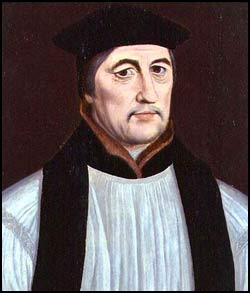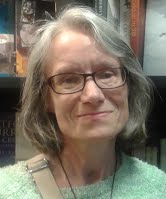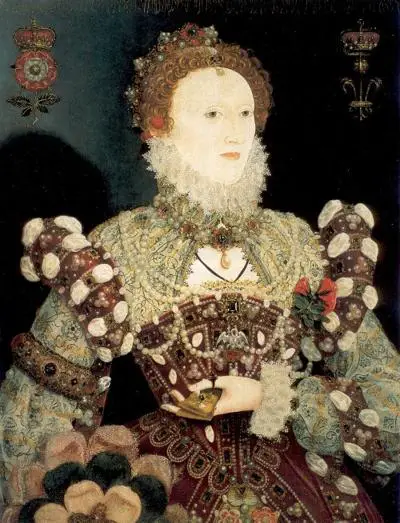Born on the 22nd March 1519, Katherine Willoughby was the daughter of William, 11th Baron Willoughby, and his wife Maria De Salinis, one of Queen Katherine of Aragon's ladies. When Katherine was just seven years old, her father died and with no male son surviving Katherine was his heir. In March 1528 Charles Brandon bought the wardship of Katherine from the King for a staggering £2,266 13s 4d with the intention of marrying Katherine to his son Henry. Katherine then came to live with the Brandons to be raised.
Charles Brandon's third wife, Mary Tudor, Queen of France, died between seven and eight o’clock in the morning on the 25th June 1533. Her funeral was held on the 20th July 1533 at Bury St Edmunds. Katherine attended the funeral and she and her mother brought forward palls of cloth of gold to the altar.
Less than three months later, Katherine was married. Charles Brandon took Katherine as his fourth wife and they married on 7th September 1533. At the time of the marriage, Brandon was forty-nine and Katherine a mere fourteen. There has been some debate over Brandon's actions in such a rushed marriage. Originally, his intention was to have Katherine marry his son Henry, who at the time was only eleven years of age. Brandon, however, needed cash and quickly and he could not afford to wait until his son came of age. In addition to this, with his son's marriage Brandon would not have acquired the properties and financial benefits that were left to Katherine by her father' instead these would have gone to his son.
We have no records regarding what Katherine thought or felt about the marriage but now at just fourteen years of age Katherine Willoughby was Duchess of Suffolk and one of the most powerful women in England.
Katherine Willoughby gave birth to a boy on 18th September 1535. A short time later the little boy, named Henry after the King, was christened. Henry VIII stood as one of the godfathers, a great honour for Brandon, and he even gave the midwife and nurse £4 for their efforts. Katherine then gave birth to a second son sometime in 1537, a boy who was christened Charles. There are no details about where or when the young boy was born.
In 1536, the Pilgrimage of Grace broke out in Lincolnshire. The people were unhappy with the dissolution of their abbey in Louth, upset with many of the government commissions in the area which were being conducted to look at the resources that the smaller monasteries had as well as the conduct of the clergy. There were also widespread rumours that the government would confiscate the jewels, plate and wealth of the monasteries and also impose new taxes upon the people. Brandon, along with the Duke of Norfolk, was given the duty of suppressing the uprising. After promises of pardons, and then Henry VIII reneging on these promises, the Pilgrimage of Grace was finally suppressed in early 1537.
Sometime before May 26th 1537, the King ordered that Brandon permanently position himself within Lincolnshire to make the King's presence known. Katherine and her two children moved to Grimsthorpe Castle in Lincolnshire to be with her husband and it was here that Katherine would make her main residence for the rest of her life.
Charles Brandon, Duke of Suffolk, died on the 22nd August 1545 at Guildford, leaving Katherine a widow at just twenty-six years of age with two small boys. Upon her husband's death Katherine retained all her own lands as well as a third of her husband's property for her Dowager payment. Her eldest son Henry obtained the remaining two-thirds of his father's property and wealth which he would be entitled to when he came of age. Katherine bought her son's wardship and right to marriage for £1500 which was to be paid over seven instalments.
Katherine was a Protestant in her beliefs, that is to say that she believed there was no need for elaborate church ceremonies with priests and saints acting as intermediaries or the need for pilgrimages. Protestants also rejected transubstantiation, the idea that the bread and wine at communion became the body and blood of Christ. They believed that the word of God came from the Bible and that salvation was through faith rather than good works and deeds. With Henry VIII's break from Rome and the English Reformation there were many upheavals in the English Church throughout Katherine's life but some of her beliefs were still not commonly accepted and thus it was quite dangerous to be a Protestant during the last years of Henry VIII's reign.
Katherine became close friends with Catherine Parr, Henry VIII's sixth wife, who also held strong Protestant beliefs. The pair held a close friendship in which they shared their thoughts and ideas regarding their faith. However, they were to walk a fine line.
Following Henry VIII's death on the 28th January 1547 his son Edward VI came to the throne. Edward shared many of the same Protestant beliefs that Katherine did and under his reign the young woman was excited to see the Protestant faith being publicly promoted throughout England.
Tragedy truck Katherine again in 1548 when her dear friend Catherine Parr died shortly after giving birth to a daughter named Mary by her fourth husband Thomas Seymour. After Seymour's execution for treason against Edward VI little Mary was handed to Katherine to look after. Katherine was not so impressed by looking after the orphaned girl and the financial strain it caused her own household. However it does not seem that the little girl lived beyond her second birthday.
Tragedy would again strike on the 14th July 1551 when both of Katherine's boys, Henry and Charles, died within an hour of one another at Buckden at the tender ages of just sixteen and fourteen. Both boys were buried at Buckden and a few months later the title of Duke of Suffolk passed on to Katherine's stepdaughter's husband, Henry Grey. It would seem that Katherine had a close relationship with her step-daughter Frances, as she spent Christmas at her home in 1551.
In July 1552 or early 1553, Katherine married her second husband Richard Bertie. Bertie was Katherine's gentleman usher and it was his role to undertake much of Katherine's day-to-day business. At thirty-six, Bertie was only three years older than Katherine and despite there being much hushed talk about her marrying beneath her station it appeared that for her second marriage Katherine chose a man she loved. Sometime in 1554 Katherine gave birth to her third child, the first with her second husband. She had a daughter who was named Susan.
Under Edward VI's reign Katherine was a hard-working Protestant, sharing her religious books with others, frequenting church, and supporting those of the same faith both financially and with her name. However, Edward VI died on 6th July 1553 and his death paved the way for the very Catholic, Mary I. Mary I desired to return England to the Catholic faith and reunite the country with Rome. This was quite in opposition to Katherine's own personal Protestant beliefs and in addition to this Mary I appointed Bishop Stephen Gardiner as her Lord Chancellor. Katherine and Gardiner had never seen eye to eye and there had been more than one occasion in the late 1540s where Katherine had insulted Gardiner. Katherine was also known to have a feisty temper. She herself admitted to having a short temper and a quick tongue and there were even times that she went out of her way to have a jibe at someone. In the past, ar a dinner party when her husband Brandon suggested that each lady ask the man they liked best to escort them to dinner. Since Katherine could not take her own husband, she decided to take Bishop Gardiner because she liked him the least. She also named her dog Gardiner as an obvious insult to the man.
With the accession of Mary I to the throne and Katherine's clear Protestant beliefs, Gardiner wasted little time in seeking to attack the Dowager Duchess of Suffolk. He claimed that her first husband, Charles Brandon, still owed the crown £4000 and that Katherine needed to repay this money. He called Katherine's husband Bertie to a meeting to discuss the financial matters but the discussion focused on Bertie's and Katherine's religious beliefs. Once he returned home, Katherine and Bertie decided that it was only a matter of time before they were arrested for their religious beliefs and they decided to flee England. In February 1555, Katherine, her husband Richard and their one year old daughter Susan left England for Europe.
In a long, dangerous and often gruelling journey, the couple travelled across Europe to Samogitia. To add to the danger and difficulties of their travels, Katherine gave birth to her second child by Bertie on the 12th October 1555: a son named Peregrine.
During their exile, Katherine, her husband and their two children had to constantly look out for the threat of Mary I and her government as well as try to deal with financial difficulties. It is unclear if the couple wished to stay in Samogitia indefinitely or if they wished to return to England at some point, however Mary I's death on 17th November 1558 paved the way for Katherine and her family to return to England.
Under the reign of Elizabeth I, Katherine and her family were able to return to England without the fear of persecution. They returned in the spring or summer of 1559 and Katherine’s lands were soon restored to her. Richard Bertie returned to courtly duties and was appointed as a Member of Parliament for Lincolnshire. Katherine continued to be an active member of the community, visiting other noble families, being petitioned for support, favours and aid by people of Lincolnshire. She also travelled regularly, often going to London. Katherine fought hard and petitioned Elizabeth I for her husband to become Baron Willoughby de Eresby, but the Queen never granted Katherine her wishes. Katherine continued to be a strong supporter of the Protestant faith and urged those around her to follow the faith as she did. She employed Protestant ministers as preachers in the local churches of Lincolnshire, sought people of the same faith as her chaplains and also provided Bibles for those in her care.
In her final years, Katherine suffered from several illnesses, on and off, and she finally died on the 19th September 1580. It is not known where Katherine died, but her funeral took place at Spilsby on the 22nd October 1580. She was sixty-one when she died. As a wife and mother, Katherine suffered great losses throughout her life but she held true to her faith, something that she was deeply passionate about and it provided her with comfort in her darkest hours.
Sarah Bryson is the author of Mary Boleyn: In a Nutshell. She is a researcher, writer and educator who has a Bachelor of Early Childhood Education with Honours and currently works with children with disabilities. Sarah is passionate about Tudor history and has a deep interest in Mary Boleyn, Anne Boleyn, the reign of Henry VIII and the people of his court. Visiting England in 2009 furthered her passion and when she returned home she started a website, queentohistory.com, and Facebook page about Tudor history. Sarah lives in Australia, enjoys reading, writing, Tudor costume enactment and wishes to return to England one day. She is currently working on a biography of Charles Brandon, Duke of Suffolk.
Sources
- Baldwin, David (2015) Henry VIII's Last Love: The Extraordinary Life of Katherine Willoughby, Lady-in-Waiting to the Tudors, Amberley Publishing, Gloucestershire.
- 'Henry VIII: August 1535, 26-31.' Letters and Papers, Foreign and Domestic, Henry VIII, Volume 9, August-December 1535. Ed. James Gairdner. London: Her Majesty's Stationery Office, 1886. 57-81. British History Online. Web. 14 August 2015. http://www.british-history.ac.uk/letters-papers-hen8/vol9/pp57-81.
- Oxford Dictionary of National Biography, Brandon, Charles, first duke of Suffolk (c.1484–1545), 2015, Oxford University Press, viewed 14 March 2015, http://www.oxforddnb.com/.







Great story, learned something new. Did any children of Charles Brandon survive?
Thanks
Frances Brandon Grey, mother of the 9 day queen Jane Grey. Jane was his daughter by Mary, Henry VIII litter sister.
Yes, his daughters by Mary Tudor (his third wife) survived:
1) Frances Brandon married Henry Grey and they were the parents of Lady Jane Grey.
2) Eleanor Brandon, who married Henry Clifford, 2nd Earl of Cumberland.
And his daughters by Anne Browne (his second wife) survived:
1) Anne Brandon who married Edward Grey, 3rd Baron Grey of Powys and then Randal Haworth.
2) Mary Brandon who married Thomas Stanley, 2nd Baron Monteagle.
Really interesting
Very interesting but just a bit religiously skewed, since it refers to Katherine’s “persecution” at the hands of Mary (which amounted to voluntary exile) but skims over the Pilgrimage of Grace her first husband helped to quell, and the 200+ Catholics who were executed as a result.
It seems that Catholics are always portrayed as the worse persecutors when in reality the numbers and treatment known always shows near the opposite. For example, “bloody” mary burned half as many heretics per year on average than her ‘compassionate’ sister Elizabeth.
It must have been very difficult to be a woman in the Tudor period but these feisty, strong women seemed to manage quite well. They seemed to have the money – not the men! I enjoyed this story very much – keep up the great work!
Catherine Willoughby was one of the most feisty and wonderful women of her day. She was indeed more Protestant than the Queen and complained that Elizabeth wasn’t Evangelical or Protestant enough. One of her friends was William Cecil, although she also wrote and told him off for staying in England and conformity. However she didn’t flee in fear of her life but was actually given a licence to go abroad and travelled under that licence with her entire family. They ended up in Poland and acted politically on behalf of the government there. Katherine also received a proposal to marry the King of Poland before her second marriage to Bertie. Grimsthorpe bears the Bertie arms but the same oath as her first husband, which he adopted Loyalty Me Oblige. Katherine Brandon had suffered the loss of her two sons of the sweat on the same day and she had been an active evangelical in her local community.